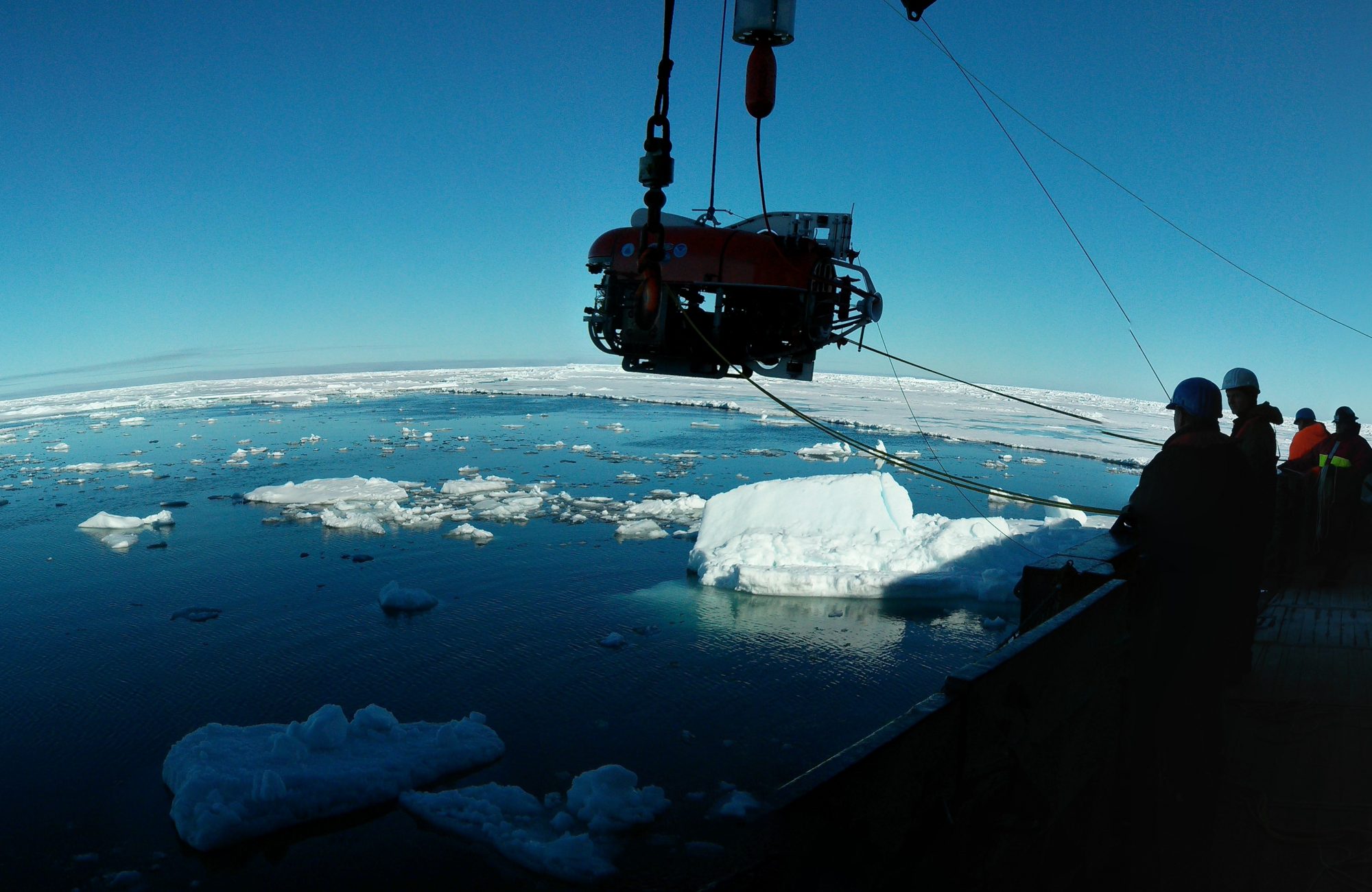Zachary Harris presented his thesis research entitled “Model-Based Cooperative Acoustic Navigation and Parameter Identification for Underactuated Underwater Vehicles” on August 16, 2019. His thesis committee included Professor Louis Whitcomb (primary advisor), Assistant Professor Marin Kobilarov, and Senior Scientist Dr. Dana Yoerger of the Woods Hole Oceanographic Institution.
Abstract
This thesis reports novel theoretical and experimental results addressing two increasingly important problems in underwater robotics: model-based cooperative acoustic navigation for UV lacking a DVL and dynamic-model parameter estimation for underactuated UVs, such as the now-ubiquitous class of torpedo-shaped UVs. This thesis reports an extension of a method to identify simultaneously UV dynamical plant model parameters (parameters for critical terms such as mass, added mass, hydrodynamic drag, and buoyancy) and control-actuator parameters (control-surface models and thruster model) in 6 DOF to tolerate simulated sensor measurement noise representative of representative of real-world sensor data, as well as extensive numerical simulations to evaluate the sensitivity of the approach to sensor noise.
The current state-of-the-art in OWTT combined acoustic communication and navigation (cooperative acoustic navigation) is to utilize purely kinematic, constant-velocity plant process models together with an on-board bottom-lock DVL to provide frequent, high-accuracy velocity corrections. However, DVLs are expensive, power consumers, physically large, and limited to acoustic bottom-lock range, which restricts their use to O(10-100m) above the sea floor or beneath surface ice. Simulation and experimental results reported herein indicate the submerged UV position estimate from cooperative acoustic navigation with a kinematic model is poor and even unstable in the absence of DVL velocity observations. These simulation and experimental results also show that cooperative acoustic navigation with a dynamic plant model performs well without a DVL and outperforms DVL-based dead reckoning, at least in the situation presented herein where the magnitude of the ambient water-current velocity is small.
The performance of the UV dynamic model, i.e., its ability to predict the vehicle’s state, depends primarily on the accuracy of the model structure and model parameters. Accurate estimates of these parameters are also required for model-based control, fault detection, and simulation of UV. While the general form of dynamical plant models for UVs is well understood, accurate values for dynamic-model parameters are impossible to determine analytically, are not provided by UV manufacturers, and can only be determined experimentally. Moreover, oceanographic UVs are subject to frequent changes in physical configuration, including changes in ballasting and trim, on-board equipment, and instrumentation (both external and internal), which may significantly affect the vehicle dynamics. Plant-model parameter estimation is generally more difficult for underactuated, torpedo-shaped UVs than for fully actuated UVs with thrusters because: 1) the reduced actuation available on underactuated UV limits the plant excitation that can be induced from the control inputs, and 2) torpedo-shaped vehicles are often actuated with control surfaces (e.g., fins, wings, rudders, etc), which are difficult to characterize independently of the plant-model parameters. For these reasons, we seek an approach to parameter estimation for underactuated UVs in 6 DOF that simultaneously estimates plant and actuator parameters and can be performed routinely in the field with minimal time and effort by the vehicle operator.
The goals of this thesis are to advance the state-of-the-art of (1) model-based state estimation for cooperative acoustic navigation of UVs and (2) dynamic plant-model parameter identification for underactuated UVs. The first goal is addressed with the evaluation of a dynamic UV plant model in cooperative acoustic navigation and a comparative analysis of the dynamic UV model and kinematic UV model without a DVL. The second goal is addressed in a collaborative effort comprising: (1) the development of the NBLS algorithm for underactuated UV plant-parameter and actuator-parameter estimation in 6 DOF, and (2) the extension of an AID algorithm, and corresponding stability proof, to estimate simultaneously plant-model and actuator parameters for underactuated UVs with diagonal mass and drag matrices in 6 DOF with realistic sensor measurement noise. These capabilities were verified by in situ vehicle experiments with the JHU Iver3 AUV and by simulation studies.
Bio
Zachary Jess Harris was born in Louisiana in 1988. He received bachelor of science degrees in Marine Engineering and Naval Architecture from Webb Institute in 2011. In August 2013, he enrolled in the Mechanical Engineering doctoral program at Johns Hopkins University. Zak has been recognized with several awards, including a Webb Institute full academic scholarship 2007-2011; Marine Technology Society Remotely Operated Vehicle scholarship first prize 2007 and runner-up 2009; Johns Hopkins University Mechanical Engineering Department Bowles Family Fellowship 2013-2014; and the National Defense Science and Engineering Graduate Fellowship 2014-2017.
